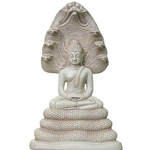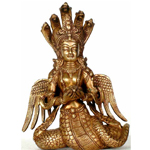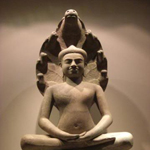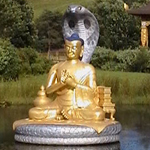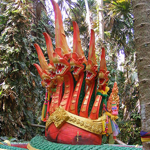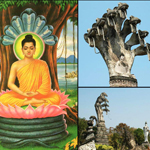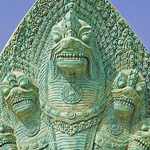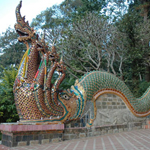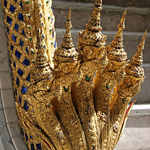
Traditions about nagas are also very common in all the Buddhist countries of Asia. In many countries, the naga concept has been merged with local traditions of great and wise serpents or dragons. In Tibet, the naga was equated with the klu, wits that dwell in lakes or underground streams and guard treasure. In China, the naga was equated with the long or Chinese dragon.
The Buddhist naga generally has the form of a great cobra-like snake, usually with a single head but sometimes with many. At least some of the nagas are capable of using magic powers to transform themselves into a human semblance. In Buddhist painting, the naga is sometimes portrayed as a human being with a snake or dragon extending over his head. One naga, in human form, attempted to become a monk; when telling it that such ordination was impossible, the Buddha told it how to ensure that it would be reborn a man, able to become a monk.
Gigantic naga protecting Buddha amongst the other sculptures of Bunleua Sulilat's Sala Keoku.
Nagas are believed to both live on Mount Sumeru, among the other minor deities, and in various parts of the human-inhabited earth. Some of them are water-dwellers, living in streams or the mer; others are earth-dwellers, living in underground caverns. Some of them sleep on top of anthills. Their food includes frogs and they love milk.
Below you will find a gallery of inspirational images that will help you in your quest of creating the perfect Naga Buddhist tattoo.
Also Check out: Religious Tattoo Index, Japanese Tattoo Index, Bodhi Tree, Parasol, Buddhist Tattoos, Buddha's Footprint, Conch Shell Tattoos, Begging Bowl, The Empty Throne, Three Jewels, Buddhist Victory Banner, Buddhist Treasure Vase, Buddhist Tattoo Index


